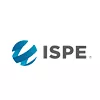The exhibition hall was bustling with 54 exhibitors and lively networking breaks. This year’s event also celebrated the announcement of 2024 ISPE Facilities of the Year Awards (FOYA) submission finalists, with innovative approaches to facility manufacturing and design, included successful plant tours following the days of packed programming, and hosted two dozen students – providing them with the opportunity to network and learn with industry innovators and collaborators.
An Aseptic 101 session, open to anyone but tailored for emerging leaders, students, and those interested in entering the field, took place on 11 March and was led by Christa B. Myers, Senior Fellow of Aseptic and Sterile Products and Vertical Market Leader with CRB, and Jörg Zimmermann, Vice President of Vetter Development Service External Affairs with Vetter Pharma Fertigung GmbH & Co KG. The introductory session addressed Annex 1 as the basis for sterile products in the EU and beyond, broke down the pillars of contamination control strategy, outlined market trends, addressed requirements, discussed key terms, and more.
The first official general session featuring Christina Meissner, GMP Inspector, AGES – Austrian Agency for Health and Food Safety, was very well received. The session provided valuable insights on sterile manufacturing facility inspections in Austria, with figures on the surveillance of medicinal products and medical devices, observations on challenges with the implemental of Annex 1, inspector expectations and subsequent findings related to contamination control strategies, questions to ask when performing a risk assessment, and more.
Gloveless Isolators sessions were well-attended, with brief presentations followed by a panel discussion. Almost 130 people attended Myers’ session, which was so popular that additional chairs needed to be added to the room to accommodate the large crowd.
“Safe and flexible: Filling small batches in the future” was presented by Klaus Ullherr, Senior Product Manager, Syntegon Technology. In the session, Ullherr started by discussing market trends and requirements as well as corresponding regulatory expectations. He talked about a partnership initiative to create a new industry standard for the filling/finishing of small batches, which entailed the processing of different RTU containers, and provided an overview of the microBatch isolator system. He concluded by sharing how this new initiative with gloveless isolators has lowered the risk of contamination, has less space requirements that other options, is future ready/highly flexible regarding packaging material, provides the maximum product yield, and provides a faster time to production.
The Sustainability track was a key area of interest for attendees. These sessions shed light on how manufacturers can reduce the carbon footprint of aseptic products and achieve CO2 neutrality.
In “Elevating Sustainability in Pharmaceutical Water Systems,” Jochen Schmidt-Nawrot, a Fellow in Process Utilities with CRB, addressed how alternative, eco-friendly methods of water for injection (WFI) generation can revolutionize the industry’s environmental impact. Schmidt-Nawrot presented a sterile primary packaging manufacturer’s concrete plans for a sustainability initiative in WFI supply, highlighting the specific use of sustainable membrane-based water treatment technologies and the challenges of implementing comprehensive heat recovery.
Directly following Schmidt-Nawrot’s presentation, Markus Burkert, Product Manager in Sustainability at Syntegon Technology GmbH, led the session “Sustainability in Pharma – How a Company Can Achieve CO2 Neutrality.” He addressed the what and why behind the drive for Net Zero and shared a case study about a leading manufacturer’s Net Zero journey, with initial outcomes, an overall outlook on what could be achieved over time, and an assessment of key challenges, opportunities, and results, which indicated a 93 percent reduction in the CO2 impact for the manufacturing company.
In “Airflow Visualization: Using Smoke to Make Things Clearer,” Norman Goldschmidt, President of Genesis AEC, and Morgan Pole, Senior Cleanroom and Contamination Control Consultant, Microrite, Inc., delved into how airflow visualization is essential for contamination control, touched on the regulatory guidelines demanding airflow visualization students (AVS), and outlined planned questions to be addressed in an upcoming handbook. In the presentation, Goldschmidt and Pole defined what exactly airflow visualization is, as well as what it can be, answered the why/addressed the value of performing airflow visualization studies (AVS), noted what studies should demonstrate, highlighted AVS as a tool for optimization, shared where AVS should be conducted, as well as how to conduct AVS, and discussed common mistakes.
Maria Löflund, Site Head at Takeda Manufacturing Austria AG, provided an overview of the more accessible and more challenging parts of Annex 1 based on her team’s experience bringing their site into compliance. The session received positive reviews from attendees, with valuable key takeaways aimed at distilling the process to make it easier for others. Read more for a deeper dive into the session’s content via a recent question-and-answer session between Löflund and Bioprocess Online.
ISPE would like to thank all who made the conference a success. Event attendees are welcome to visit the conference platform to access on-demand content, which is accessible for 90 days following the conference’s end date (13 March).
View the programme or register for the 2024 ISPE Europe Annual Conference, ISPE’s next conference which is one of the largest of the year.




